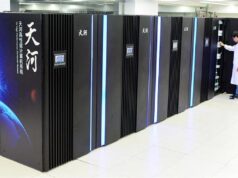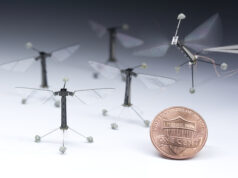Blazing Lithium, Smoking Circuits: Welcome to the Battery Wars
The future isn’t clean or quiet — it’s a roaring madhouse of electrons, billion-dollar bets, and the slow death of Big Oil. Two heavyweights — Tesla and BYD — have seized the front lines, but beneath the shiny logos, their electric hearts beat wildly different tunes.
Nobody knew exactly how different until a rogue team of engineers ripped apart Tesla’s hyped 4680 cell and BYD’s sinister Blade battery. What they found wasn’t just surprising — it was a high-voltage manifesto for how the war will be won.
Dissection Under Fire: Breaking Open the 4680 and the Blade
Like surgeons operating with chainsaws, the researchers — led by Jonas Gorsch from RWTH Aachen University — gutted the batteries, splaying their secrets under cold, unforgiving light.
- Tesla’s 4680: Built for speed, power, and raw density. Think muscle car wrapped in silicon dreams.
- BYD’s Blade: A cold, calculating machine — obsessively efficient, ruthlessly cost-effective. The East doesn’t play the same game.
They measured everything: the electrode guts, the chemical cocktails, the thermal tantrums, even the shadowy processes that welded these monsters together.
Shock Revelations: No Silicon, No Mercy
One bombshell hit like a brick to the teeth: No silicon in the anodes. None. Not even in Tesla’s cell, despite the entire industry swearing that silicon was the holy grail for more juice.
Instead, both companies had stripped down to the basics, relying on old-school graphite. Why? Stability, cost, maybe sheer nihilism. Hard to say.
Another twist: while Tesla and BYD seem like mortal enemies, their tech isn’t that different where it counts. Both ditch the tired ultrasonic welding for the sleeker, faster laser welding — melting metal at the speed of madness.
Divergent Dreams: Two Roads into the Electric Abyss
Despite the shared tricks, Tesla and BYD split hard on philosophy:
- Tesla: Bigger energy, faster death. High-performance batteries with a hunger for risk.
- BYD: Smarter cooling, tighter packaging, survival at any cost.
BYD even rolled out a new trick — laminating the separator edges between anode and cathode — a subtle move that screams efficiency to anyone paying attention.
Meanwhile, Tesla’s flexing a novel binder in their electrodes. The stuff that holds the black magic together. Different, daring, dangerous.
The Verdict: No Heroes, Only Survivors
As the dust cleared, the message was obvious: There’s no single way to win the EV war. Tesla bets on brute strength; BYD bets on clever engineering.
Both are monsters — elegant, terrifying, and unstoppable in their own right. The real battle, the engineers warn, will be fought over years of grinding wear and tear. Heat. Charge cycles. Microscopic failures that bloom into billion-dollar nightmares.
This teardown wasn’t just a peek under the hood — it was a blueprint for the future of transportation. And the future looks fast, volatile, and very, very strange.
(Reference: Study from Cell Reports Physical Science, March 6, 2025)
FAQ: Tesla vs. BYD Battery Teardown – What You Need to Know
What did engineers discover when they dismantled Tesla’s 4680 and BYD’s Blade batteries?
They unearthed two radically different philosophies of battery design:
- Tesla focused on raw energy density and performance.
- BYD prioritized efficiency, thermal management, and cost savings.
Despite their differences, both used laser welding and surprisingly skipped using silicon in their anodes — a shock to industry expectations.
Why is it surprising that there was no silicon in the anodes?
Silicon has been hyped as the future of high-capacity batteries because it can hold more lithium than graphite.
Finding zero silicon — especially in Tesla’s next-gen 4680 cells — suggests manufacturers are still wary of silicon’s instability and swelling problems during charge cycles. In short: too risky for mass production… for now.
How does BYD’s Blade battery differ from Tesla’s 4680?
- Blade (BYD): Bigger, more space-efficient, better cooling, uses laminated separators for extra stability.
- 4680 (Tesla): Compact, insanely energy-dense, experimental new binders holding the electrodes together.
Think of BYD’s Blade as a cold, methodical engineer — and Tesla’s 4680 as a hot-blooded street racer.
Did the teardown reveal who makes the “better” battery?
Not exactly. The study showed two different strengths:
- Tesla wins on energy performance and power output.
- BYD wins on efficiency, heat management, and potentially lower costs.
In a real-world deathmatch (i.e., the grueling life of an EV battery), both designs have their own risks and advantages.
What does this mean for the future of electric vehicles?
The teardown gives researchers and manufacturers a benchmark for large-format battery design.
It shows there’s no single path to the EV promised land — and that smart engineering choices today will shape the cars (and grid systems) of tomorrow.
In short: expect the EV battery arms race to get even weirder and more brutal.












